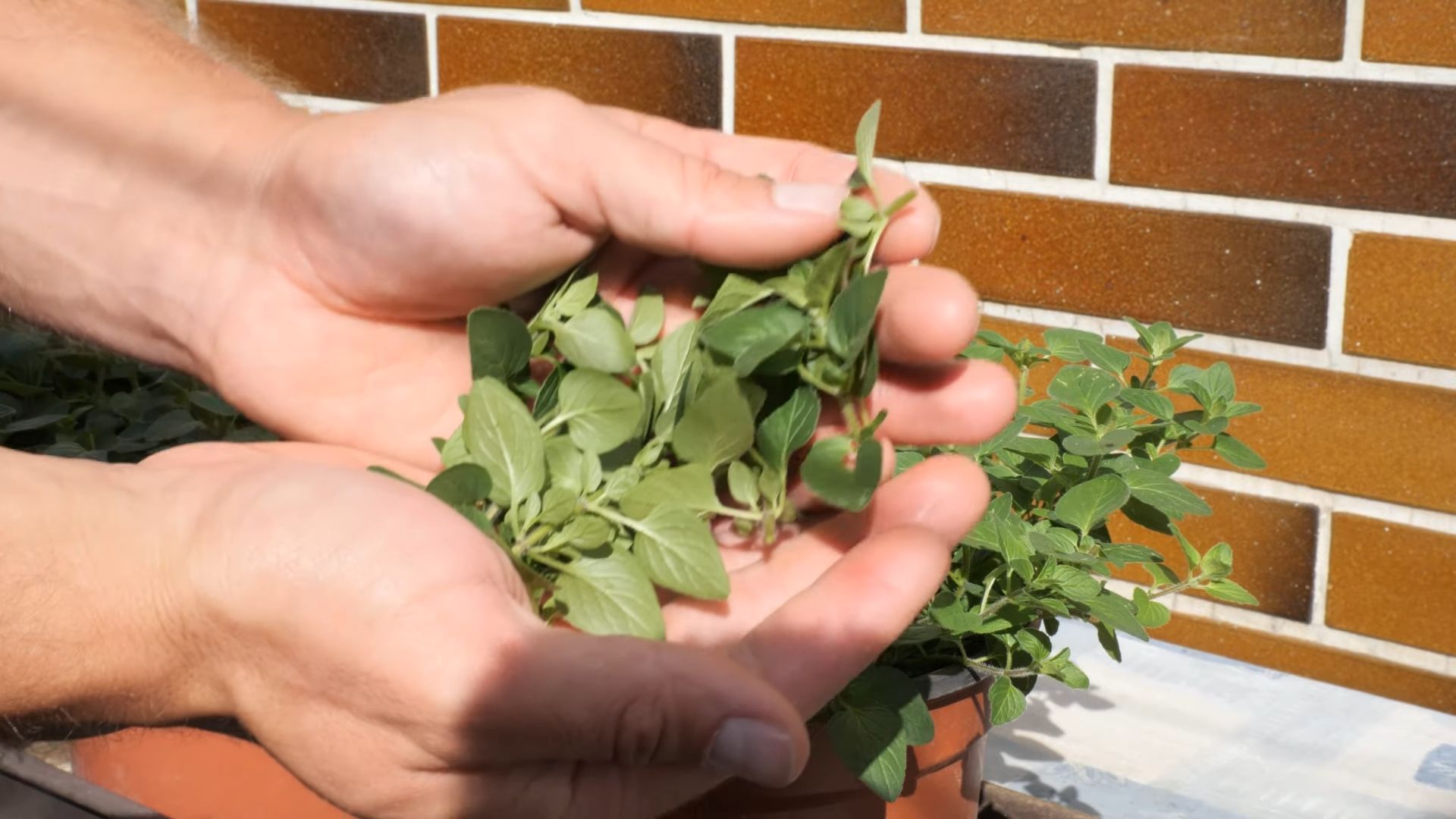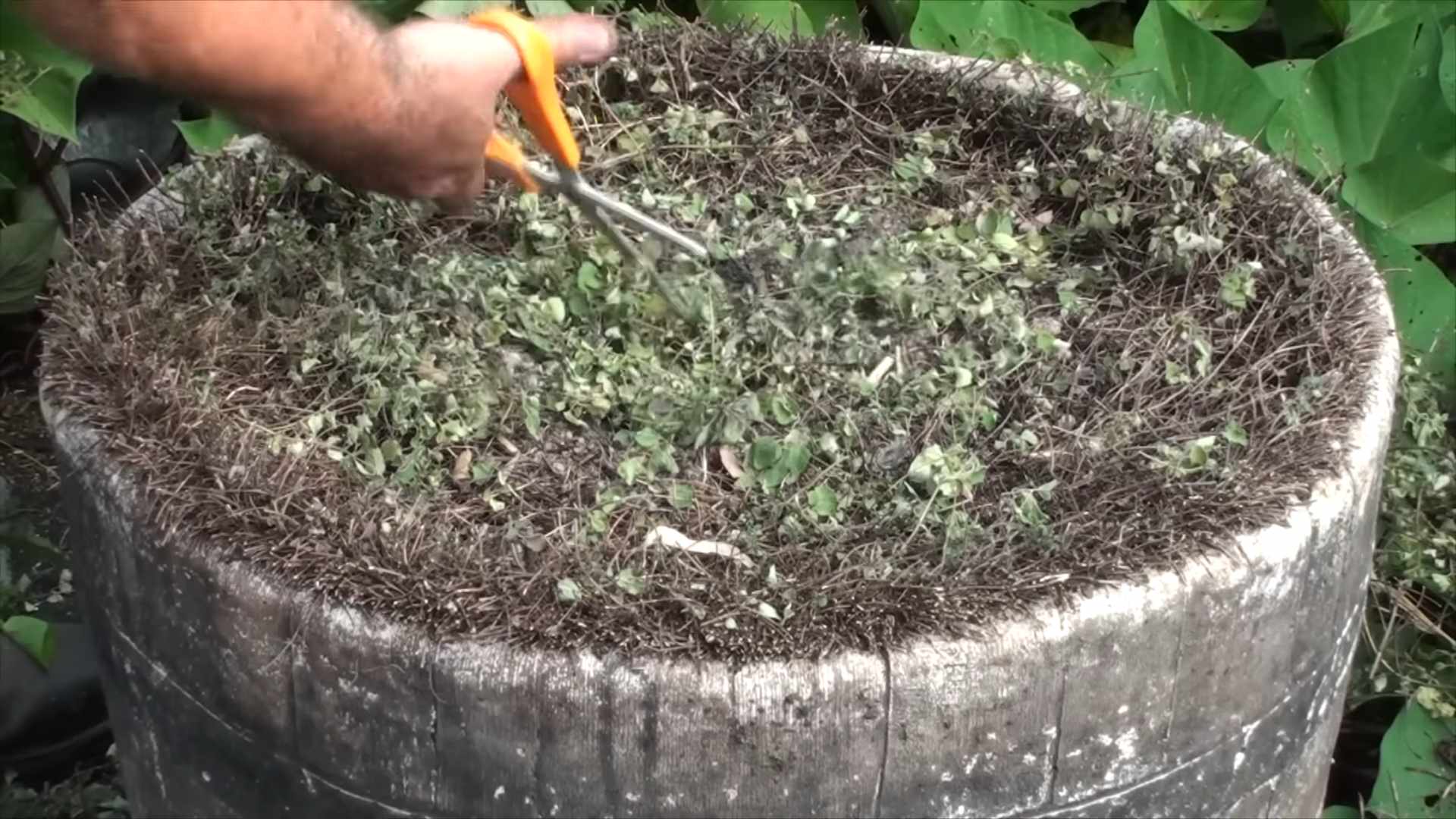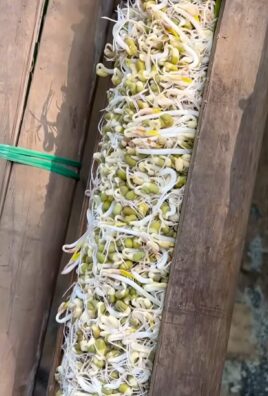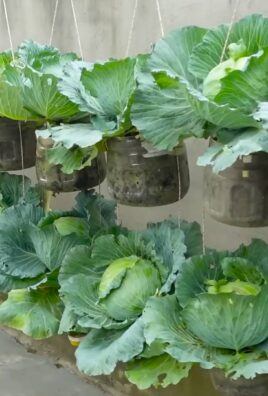Growing Oregano Indoors is easier than you might think, and I’m here to show you how! Forget those sad, dried-up oregano flakes from the grocery store. Imagine having fresh, fragrant oregano right at your fingertips, ready to add a burst of flavor to your favorite dishes.
Oregano, with its rich history stretching back to ancient Greece and Rome, wasn’t just a culinary herb; it symbolized joy and happiness. It was even used medicinally! Today, while we might not be warding off evil spirits with it, we can certainly elevate our cooking and bring a little bit of that ancient joy into our homes. But why struggle with outdoor gardens when you can cultivate this flavorful herb right inside?
Let’s face it, not everyone has the space or the time for a sprawling outdoor garden. Apartment living, busy schedules, and unpredictable weather can all put a damper on our gardening dreams. That’s where the magic of indoor gardening comes in. Growing Oregano Indoors allows you to enjoy fresh herbs year-round, regardless of your living situation or the season. Plus, it’s incredibly rewarding to nurture a plant from a tiny seedling to a thriving herb, adding a touch of green and a delicious aroma to your living space. So, are you ready to ditch the dried stuff and embark on a flavorful indoor gardening adventure with me? Let’s get started!

Growing Tomatoes from Store-Bought Tomatoes: A DIY Guide
Hey there, fellow gardening enthusiasts! Ever looked at a juicy, ripe tomato from the grocery store and thought, “I wonder if I could grow more of these?” Well, guess what? You absolutely can! It’s a fun and rewarding DIY project, and I’m here to guide you through the process. While it’s not guaranteed to work every single time (hybrid tomatoes can be tricky!), it’s definitely worth a shot. Let’s dive in!
Choosing the Right Tomato
Before we get our hands dirty, it’s crucial to pick the right tomato. Not all store-bought tomatoes are created equal when it comes to propagation.
* Opt for Heirloom Varieties: Heirloom tomatoes are your best bet. These are open-pollinated varieties, meaning their seeds will produce plants that are true to type. Look for names like ‘Brandywine,’ ‘Cherokee Purple,’ or ‘San Marzano.’ These are usually labeled as such in specialty grocery stores or farmers markets.
* Avoid Hybrids: Hybrid tomatoes (often labeled with an “F1” designation) are bred for specific traits like disease resistance or uniform size. While they’re great for commercial production, their seeds often don’t produce plants that are identical to the parent. You might get something completely different, or nothing at all.
* Select Ripe and Healthy Tomatoes: Choose tomatoes that are fully ripe, vibrant in color, and free from blemishes, bruises, or signs of decay. The healthier the tomato, the better the chances of viable seeds.
* Organic is a Plus: While not essential, organic tomatoes are preferable. They haven’t been treated with synthetic pesticides, which could potentially affect seed germination.
Extracting the Seeds
Okay, you’ve got your perfect tomato. Now it’s time to get those precious seeds out!
1. Slice the Tomato: Using a clean knife, carefully slice the tomato in half horizontally. This will expose the seed cavities.
2. Scoop Out the Seeds and Pulp: Use a spoon or your fingers to scoop out the seeds and surrounding pulp into a small container. I like to use a glass jar or a plastic cup.
3. Fermentation (The Key to Success!): This is the most important step! The fermentation process removes a germination-inhibiting gel coating around the seeds and helps kill off any seed-borne diseases.
* Add a small amount of water to the container – just enough to cover the seeds and pulp.
* Leave the container in a warm place (around 70-75°F or 21-24°C) for 3-4 days. You’ll notice a layer of mold forming on top – don’t worry, that’s a good thing! It means the fermentation process is working.
* Stir the mixture once or twice a day.
* You’ll know the fermentation is complete when the pulp has broken down, the seeds have sunk to the bottom, and the mixture smells a bit funky (but not rotten!).
4. Rinse the Seeds: Carefully pour off the moldy liquid and pulp. Add fresh water to the container, swirl the seeds around, and let the good seeds settle to the bottom. Pour off the water and any remaining pulp. Repeat this rinsing process several times until you have clean seeds.
5. Drying the Seeds: Spread the clean seeds in a single layer on a paper towel or a coffee filter. Make sure they’re not touching each other.
6. Let Them Dry Completely: Place the paper towel with the seeds in a cool, dry, and well-ventilated place. Allow the seeds to dry completely for about 1-2 weeks. They should be hard and brittle to the touch.
7. Store the Seeds: Once the seeds are completely dry, store them in an airtight container (like a glass jar or a seed packet) in a cool, dark, and dry place. Properly stored tomato seeds can remain viable for several years. I like to label the container with the tomato variety and the date I extracted the seeds.
Starting the Seeds Indoors
Now that you have your dried tomato seeds, it’s time to start them indoors. This gives them a head start before transplanting them into your garden.
1. Gather Your Supplies: You’ll need:
* Seed starting trays or small pots (I prefer using peat pots or biodegradable pots to minimize transplant shock)
* Seed starting mix (this is a sterile, lightweight soil mix specifically designed for starting seeds)
* A spray bottle filled with water
* A heat mat (optional, but it helps with germination)
* A grow light (optional, but it provides consistent light for healthy seedlings)
2. Moisten the Seed Starting Mix: Add water to the seed starting mix until it’s evenly moist but not soggy.
3. Fill the Trays or Pots: Fill the seed starting trays or pots with the moistened seed starting mix.
4. Sow the Seeds: Make a small indentation (about ¼ inch deep) in the center of each pot or cell. Place 2-3 seeds in each indentation. This increases the chances of at least one seed germinating.
5. Cover the Seeds: Gently cover the seeds with a thin layer of seed starting mix.
6. Water Gently: Use a spray bottle to gently water the soil. Avoid overwatering, as this can lead to damping-off disease.
7. Provide Warmth and Light: Place the seed starting trays or pots on a heat mat (if using) and under a grow light (if using). If you don’t have a heat mat, place them in a warm location (around 70-80°F or 21-27°C). If you don’t have a grow light, place them near a sunny window, but be sure to rotate them regularly to prevent them from leaning towards the light.
8. Keep the Soil Moist: Check the soil moisture daily and water gently as needed to keep it consistently moist but not soggy.
9. Wait for Germination: Tomato seeds typically germinate in 5-10 days.
10. Thin the Seedlings: Once the seedlings have emerged and have their first true leaves (the second set of leaves), thin them out by snipping off the weaker seedlings at the soil line with scissors. Leave only the strongest seedling in each pot or cell.
Transplanting the Seedlings
Once your seedlings have grown a bit and the weather is warm enough, it’s time to transplant them into your garden.
1. Harden Off the Seedlings: This is a crucial step to acclimate the seedlings to outdoor conditions. For about a week before transplanting, gradually expose the seedlings to longer periods of outdoor sunlight and cooler temperatures. Start by placing them in a sheltered location for an hour or two each day, gradually increasing the time and exposure to the elements.
2. Choose a Sunny Location: Tomatoes need at least 6-8 hours of sunlight per day. Choose a location in your garden that receives plenty of sun.
3. Prepare the Soil: Tomatoes prefer well-drained soil that is rich in organic matter. Amend the soil with compost or aged manure before planting.
4. Dig the Holes: Dig holes that are slightly larger than the root balls of the seedlings. Space the holes about 2-3 feet apart, depending on the variety of tomato.
5. Plant the Seedlings: Gently remove the seedlings from their pots. If you’re using peat pots or biodegradable pots, you can plant them directly into the ground. Otherwise, carefully loosen the root ball and plant the seedlings in the holes.
6. Bury the Stem: This is a trick I swear by! Bury the stem of the tomato plant up to the first set of leaves. Tomatoes can grow roots along their stems, which will result in a stronger, more vigorous plant.
7. Water Thoroughly: Water the newly transplanted seedlings thoroughly.
8. Add Support: Provide support for the tomato plants with stakes, cages, or trellises. This will help prevent the plants from falling over as they grow and produce fruit.
9. Mulch: Apply a layer of mulch around the base of the plants to help retain moisture, suppress weeds, and regulate soil temperature.
10. Fertilize: Fertilize the tomato plants with a balanced fertilizer according to the package directions.
Caring for Your Tomato Plants
Now that your tomato plants are in the ground, it’s important to provide them with proper care to ensure a bountiful harvest.
* Water Regularly: Water the tomato plants deeply and regularly, especially during dry periods. Avoid overhead watering, as this can lead to fungal diseases.
* Fertilize Regularly: Fertilize the tomato plants every few weeks with a balanced fertilizer.
* Prune: Prune the tomato plants to remove suckers (the small shoots that grow between the main stem and the branches

Conclusion
So, there you have it! Growing oregano indoors isn’t just a possibility; it’s a rewarding and surprisingly simple way to have fresh, flavorful herbs at your fingertips year-round. We’ve walked through the essential steps, from selecting the right variety and providing adequate light to ensuring proper watering and harvesting techniques. But why is this DIY trick a must-try?
Firstly, consider the unparalleled freshness. Store-bought dried oregano simply can’t compete with the vibrant aroma and intense flavor of freshly snipped leaves. Imagine adding a sprinkle of your own homegrown oregano to your pasta sauce, pizza, or grilled chicken – the difference is truly remarkable. Secondly, think about the cost savings. Packets of fresh herbs from the grocery store can be expensive, especially if you only need a small amount. With a single oregano plant, you can enjoy a continuous supply of this versatile herb for months, even years, with proper care.
Beyond the practical benefits, growing oregano indoors offers a connection to nature and a sense of accomplishment. Nurturing a plant from a tiny seedling or cutting to a thriving herb is incredibly satisfying. It’s a small but meaningful way to bring a touch of the outdoors into your home, especially during the colder months.
But don’t stop there! Experiment with different varieties of oregano to discover your favorites. Greek oregano is known for its strong, pungent flavor, while Italian oregano offers a milder, sweeter taste. You can even try growing golden oregano for its beautiful foliage and subtle citrus notes. Consider using different types of containers, from terracotta pots to self-watering planters, to find what works best for your space and lifestyle.
And speaking of variations, why not try propagating your oregano plant to create even more plants? Simply take a stem cutting, remove the lower leaves, and place it in water until roots develop. Then, transplant it into a pot of soil and watch it grow! You can also dry your excess oregano leaves to preserve them for later use. Simply hang the stems upside down in a cool, dry place until the leaves are brittle, then crumble them into an airtight container.
We wholeheartedly encourage you to give this DIY trick a try. Growing oregano indoors is an accessible and rewarding project for gardeners of all skill levels. Whether you’re a seasoned green thumb or a complete beginner, you’ll be amazed at how easy it is to cultivate your own fresh herbs.
Once you’ve embarked on your indoor oregano growing journey, we’d love to hear about your experience! Share your tips, tricks, and photos in the comments below. Let’s create a community of indoor herb enthusiasts and inspire others to discover the joys of growing their own food. What are you waiting for? Get planting and enjoy the delicious rewards of your own homegrown oregano!
Frequently Asked Questions (FAQ)
1. What is the best type of oregano to grow indoors?
The best type of oregano to grow indoors depends on your personal preference for flavor and aroma. However, some varieties tend to thrive better in indoor environments. Greek oregano (Origanum vulgare hirtum) is a popular choice due to its strong, pungent flavor and relatively compact growth habit. It’s well-suited for containers and tolerates the slightly drier conditions often found indoors. Italian oregano (Origanum x majoricum) is another excellent option, offering a milder, sweeter flavor that’s perfect for a variety of dishes. Golden oregano (Origanum vulgare ‘Aureum’) is prized for its beautiful golden foliage and subtle citrus notes, adding a touch of visual appeal to your indoor herb garden. When selecting your oregano variety, consider the amount of space you have available and the type of flavors you enjoy most. You can often find starter plants at local nurseries or garden centers, or you can start from seeds.
2. How much sunlight does indoor oregano need?
Oregano thrives in bright, sunny conditions, so providing adequate light is crucial for successful indoor growing. Ideally, your oregano plant should receive at least six to eight hours of direct sunlight per day. A south-facing window is typically the best location, as it receives the most sunlight throughout the day. If you don’t have access to a south-facing window, an east- or west-facing window can also work, but you may need to supplement with artificial light. If your oregano plant isn’t getting enough sunlight, it may become leggy (tall and spindly) and produce fewer leaves. To supplement natural light, you can use a grow light. Fluorescent or LED grow lights are energy-efficient and provide the full spectrum of light that plants need to thrive. Position the grow light a few inches above the plant and leave it on for 12-16 hours per day.
3. How often should I water my indoor oregano plant?
Watering is a critical aspect of caring for indoor oregano. Overwatering can lead to root rot, while underwatering can cause the plant to wilt and dry out. The key is to find the right balance. Water your oregano plant when the top inch of soil feels dry to the touch. Use your finger to check the soil moisture before watering. When you do water, water thoroughly until the water drains out of the bottom of the pot. Be sure to discard any excess water that accumulates in the saucer to prevent root rot. During the winter months, when the plant is not actively growing, you may need to water less frequently. The frequency of watering will also depend on the size of the pot, the type of soil, and the humidity levels in your home.
4. What type of soil is best for growing oregano indoors?
Oregano prefers well-draining soil that is slightly acidic to neutral in pH. A good potting mix for oregano should be light and airy, allowing for good drainage and aeration. You can use a commercially available potting mix specifically formulated for herbs, or you can create your own mix by combining equal parts of potting soil, perlite, and vermiculite. Perlite and vermiculite help to improve drainage and aeration, preventing the soil from becoming waterlogged. Avoid using garden soil, as it can be too heavy and compact for container gardening. It’s also important to choose a pot with drainage holes to allow excess water to escape.
5. How do I harvest oregano leaves from my indoor plant?
Harvesting oregano leaves regularly encourages the plant to grow bushier and produce more leaves. You can start harvesting oregano leaves once the plant is about 6-8 inches tall. To harvest, simply snip off the stems with scissors or pruning shears, cutting just above a leaf node (the point where leaves grow from the stem). This will encourage the plant to branch out and produce more leaves. You can harvest up to one-third of the plant at a time without harming it. The best time to harvest oregano is in the morning, after the dew has dried but before the sun gets too hot. This is when the leaves are at their most flavorful. You can use the fresh oregano leaves immediately, or you can dry them for later use. To dry oregano, hang the stems upside down in a cool, dry place until the leaves are brittle, then crumble them into an airtight container.
6. How do I propagate oregano from cuttings?
Propagating oregano from cuttings is a simple and effective way to create new plants from your existing oregano plant. To propagate oregano, take a stem cutting that is about 4-6 inches long. Remove the lower leaves from the cutting, leaving only a few leaves at the top. Place the cutting in a glass of water, making sure that the lower nodes (where the leaves were removed) are submerged. Place the glass in a bright, indirect light location. Change the water every few days to prevent the growth of bacteria. After a few weeks, the cutting should develop roots. Once the roots are about an inch long, you can transplant the cutting into a pot of soil. Water the newly planted cutting regularly until it becomes established.
7. What are some common problems when growing oregano indoors and how do I fix them?
While growing oregano indoors is generally easy, you may encounter a few common problems. One common problem is pests, such as aphids or spider mites. These pests can suck the sap from the leaves, causing them to become yellow and distorted. To get rid of pests, you can spray the plant with insecticidal soap or neem oil. Another common problem is root rot, which is caused by overwatering. If your oregano plant has root rot, the leaves may turn yellow and the stems may become mushy. To prevent root rot, make sure to water your oregano plant only when the top inch of soil feels dry to the touch and ensure that the pot has good drainage. Finally, oregano plants can sometimes become leggy if they don’t receive enough sunlight. If your oregano plant is leggy, move it to a brighter location or supplement with artificial light.





Leave a Comment